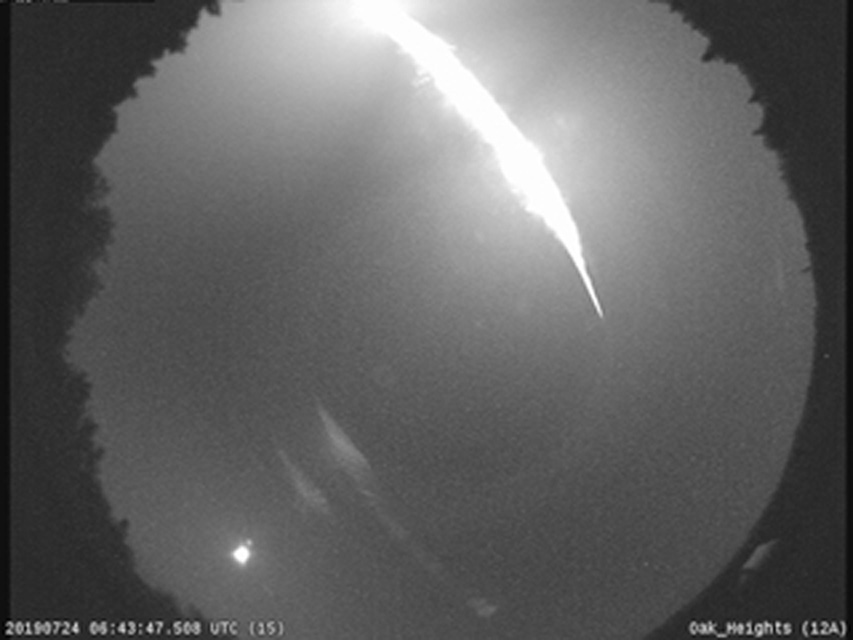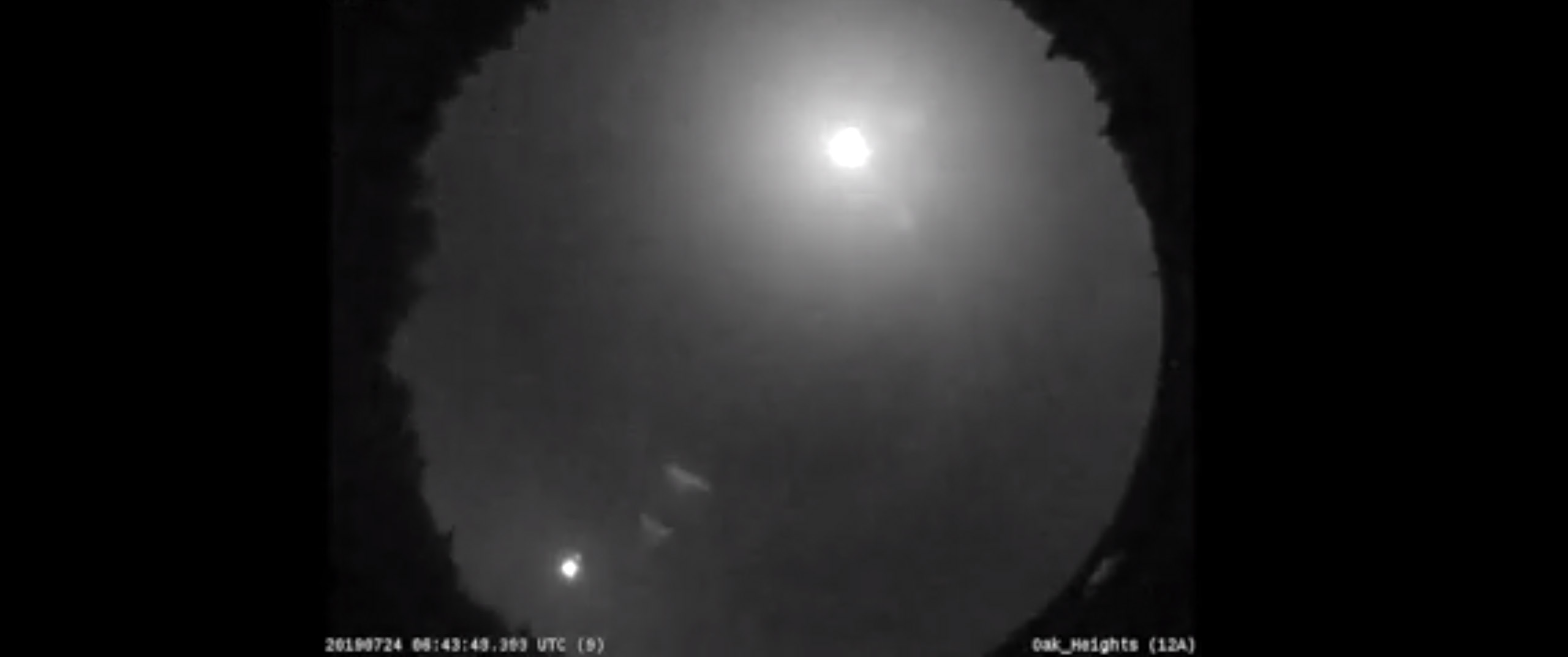Fireball! Incredible Video Shows Meteor Streaking Across Canadian Sky
A fireball as bright as the full moon streaked across the Canadian province of Ontario early Wednesday (July 24), possibly throwing meteorites to Earth along the way.
The flash of light from a beachball-size space rock was recorded by 10 all-sky cameras deployed by Western University in London, Canada, and mounted across southern Ontario and Quebec. While meteorites could have fallen in the Bancroft area (about 3.5 hours northeast of Toronto), footage was captured as far away as Montreal — about 260 miles (420 kilometers) east of Bancroft.
The fireball was likely visible in the United States as well, as there are several pending reports on the American Meteor Society's website from that time, from observers in New York state and Pennsylvania.
"We suspect meteorites made it to the ground because the fireball ended very low in the atmosphere, just to the west of Bancroft, and slowed down significantly," Peter Brown, a Western professor who specializes in meteorites, said in a statement. "This is a good indicator that material survived."
Related: Aurora Photographer Captures Dazzling Fireball Over Canada (Photos)

At first glance, it appears the fireball first showed up at 2:44 a.m. EDT over Lake Ontario (near Oshawa) at an altitude of about 60 miles (93 kilometers). It moved northeast in view of the Ontario towns of Clarington and Peterborough, flashing bright flares before disappearing from view west of Bancroft.
The space rock pummeling through the atmosphere, also known as a meteoroid, was about 12 inches (30 centimeters) in diameter, according to the university. That size suggests that any possible meteorites — fragments that hit the ground — would be tens to hundreds of grams in mass.
Get the Space.com Newsletter
Breaking space news, the latest updates on rocket launches, skywatching events and more!
"Meteorites can be recognized by their dark, often scalloped exterior," Western added. "Usually they will be denser than a 'normal' rock and will often be attracted to a magnet due to their metal content." But the university warned that those looking to find a meteorite should be aware that fragments belong to the person who owns the land where they're found, and that permission must be granted to search on private land.

Anybody who finds possible meteorites in this area should get in touch with Kim Tait of the Royal Ontario Museum at ktait@rom.on.ca, Western said, urging the public to handle any fragments as little as possible to preserve their scientific worth. Instead, people should place suspected space rocks in a clean plastic bag or wrap them in aluminum foil.
Many thousands of meteoroids fall into Earth's atmosphere every year and appear as "shooting stars" in a clear night sky. The vast majority of meteoroids burn up completely in the atmosphere, or only send a few small fragments to the ground. NASA's Planetary Defense Coordination Office keeps an eye out for larger and more threatening space rocks through a network of partner telescopes, but so far, no imminent threats to Earth are known.
- Photos: Fireball Drops Meteorites On California
- Brilliant Daytime Fireball Streaks Over Canada, New York (Video)
- Caught Speeding: Illinois Patrol Cop Spies Blazing Fireball (Video)
Follow Elizabeth Howell on Twitter @howellspace. Follow us on Twitter @Spacedotcom and on Facebook.
Join our Space Forums to keep talking space on the latest missions, night sky and more! And if you have a news tip, correction or comment, let us know at: community@space.com.

Elizabeth Howell (she/her), Ph.D., was a staff writer in the spaceflight channel between 2022 and 2024 specializing in Canadian space news. She was contributing writer for Space.com for 10 years from 2012 to 2024. Elizabeth's reporting includes multiple exclusives with the White House, leading world coverage about a lost-and-found space tomato on the International Space Station, witnessing five human spaceflight launches on two continents, flying parabolic, working inside a spacesuit, and participating in a simulated Mars mission. Her latest book, "Why Am I Taller?" (ECW Press, 2022) is co-written with astronaut Dave Williams.









